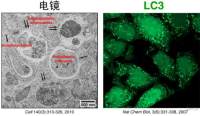Confocal scanning laser microscopes are best known for making very high-resolution images of small three-dimensional (3D) specimens by recording a series of two-dimensional confocal slices of the specimen at different focus positions. Additionally, confocal microscopes are excellent for measuring weak fluorescence from areas adjacent to areas of very strong fluorescence, because the confocal pinhole rejects light from areas outside the focus spot. The resolution of a confocal microscope is also better than that of a nonconfocal instrument, an important property when submicron resolution is required. At first glance, none of these properties seems important for imaging genetic microarrays, whose features range from 200 to 10 μ in size, and may cover the entire surface of a microscope slide in a two-dimensional array. However, we will find that the array of genetic material, when deposited on a weakly fluorescent substrate (like a glass slide) or in contact with an aqueous buffer solution acts like a 3D specimen as far as imaging is concerned. Confocal imaging helps to reject much of the background signal from the glass slide or the aqueous solution, and it is also useful for rejecting fluorescence from areas that surround the focal spot in the focal plane.






